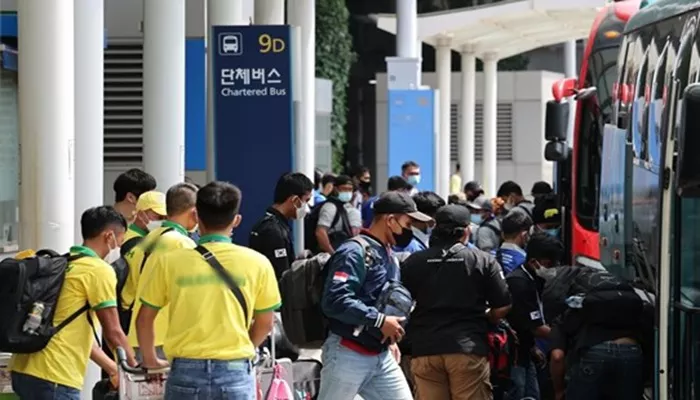The foreign labor market in South Korea is experiencing notable changes, as recent immigration statistics from the Ministry of Justice reveal.
On August 13, the Ministry reported that 168,755 non-professional employment (E-9) visa holders entered the country last year, marking a 25% increase from the previous year. This rise highlights significant shifts in the composition and dynamics of the foreign workforce in South Korea.
The E-9 visa allows companies to hire foreign workers for non-professional roles, a category that saw a sharp decline during the COVID-19 pandemic. In 2019, 151,116 workers entered South Korea with E-9 visas, but this number dropped drastically to 41,992 in 2020 and further to 16,732 in 2021, due to travel restrictions and health concerns. However, last year’s figures nearly returned to pre-pandemic levels, indicating a strong recovery.
The first half of this year has already seen over 90,000 E-9 visa holders enter the country, suggesting a continued upward trend. This increase is largely driven by labor shortages in various industries, which have heightened demand for foreign workers. Historically, the foreign labor market in South Korea was dominated by ethnic Koreans from China holding H-2 visas. However, the number of H-2 visa holders has dropped significantly, from 250,655 in 2019 to just 77,479 last year—a 70% decrease. As a result, the proportion of H-2 visa holders in the total foreign resident population fell from 15.2% in 2019 to 6.1% last year.
A shift in the foreign labor market is also evident in the nationalities of the workers. Last year, Nepalese workers led the E-9 visa category, with 26,477 entrants—a 57% increase compared to pre-COVID levels. Vietnam, which had been the leading source of E-9 workers until 2019, saw 22,999 workers entering South Korea last year. Cambodia followed with 21,046 entrants, while Indonesia and the Philippines contributed 17,090 and 15,354 workers, respectively. Notably, the number of E-9 visa holders from Laos surged by 428%, from 204 in 2019 to 1,077 last year.
The government’s employment permit system, which allows companies unable to hire domestic workers to employ foreigners, has expanded to include more sectors. Initially focused on manufacturing, construction, agriculture, livestock, and fisheries, the system now covers service industries like hotel and condominium operations, as well as kitchen assistants in restaurants. This expansion reflects South Korea’s evolving economic needs and its increasing reliance on foreign labor.
“The number of non-professional employment (E-9) visa entrants last year totaled 168,755, an increase of 33,588 (25%) from the previous year,” the Ministry of Justice reported. This rise is significantly influenced by the preferences of domestic companies, which can select workers from preferred countries within the allotted quotas.
Understanding the historical context of foreign labor in South Korea is crucial to grasping these changes. The country’s rapid economic development since the 1960s has led to labor shortages, particularly in low-skilled sectors, necessitating the importation of foreign workers. The COVID-19 pandemic caused a steep decline in the number of foreign workers entering South Korea, but as the impact of the pandemic lessens, the labor market is recovering, with noticeable shifts in the nationalities of incoming workers.
South Korea’s aging population and declining birth rates further exacerbate labor shortages, making foreign workers increasingly essential to the economy. However, integrating these workers into Korean society remains challenging, with language barriers, cultural differences, and social acceptance posing ongoing issues.
As the foreign labor market continues to evolve, both the government and companies must adapt to ensure a stable and productive workforce. Current trends suggest a growing diversity in the foreign labor force, with workers from various Asian countries playing an increasingly significant role in South Korea’s economic landscape.


